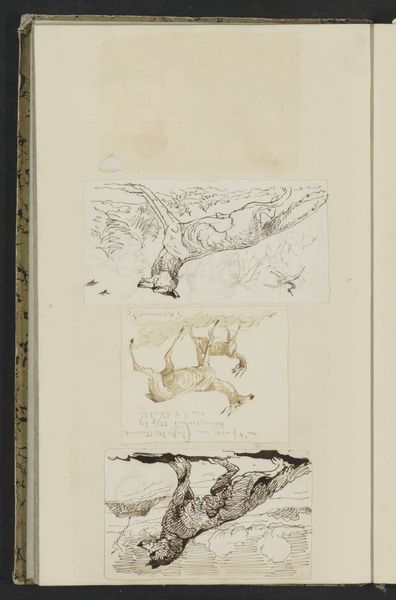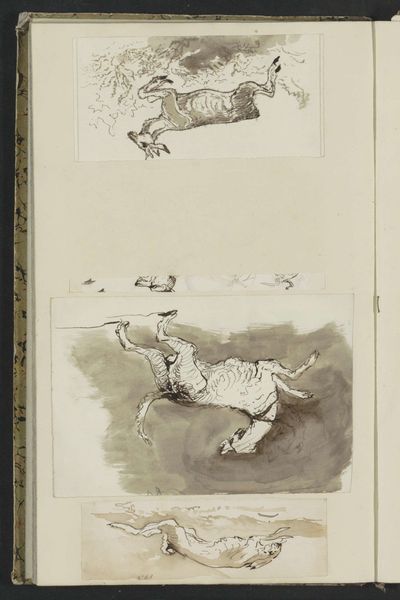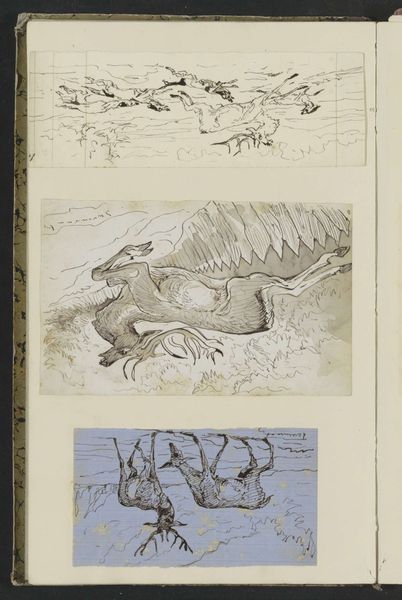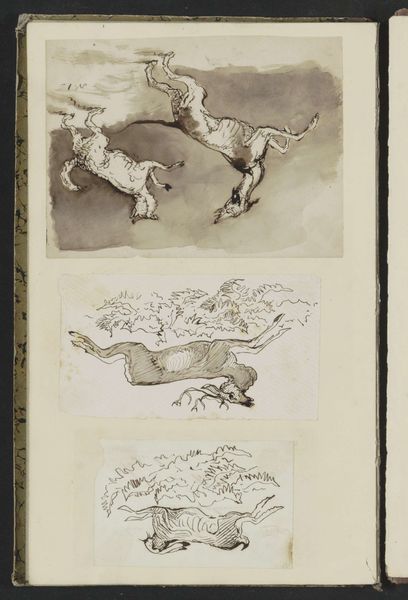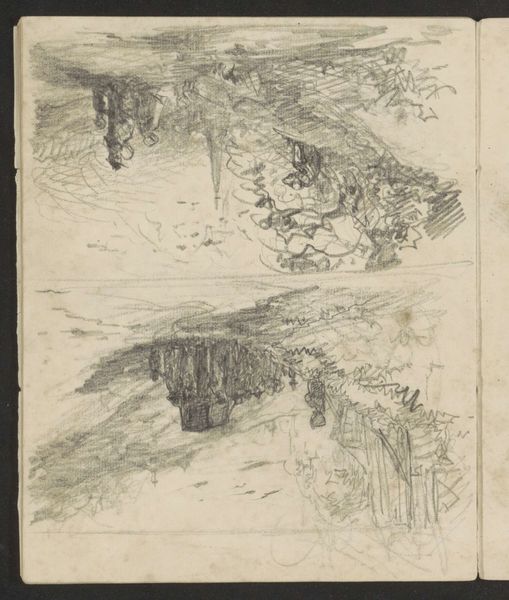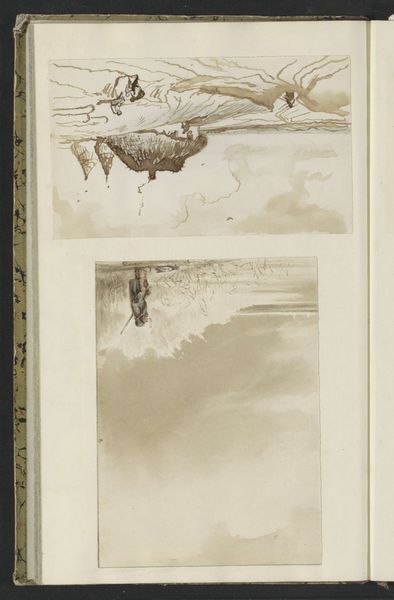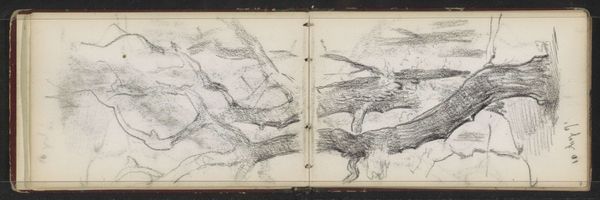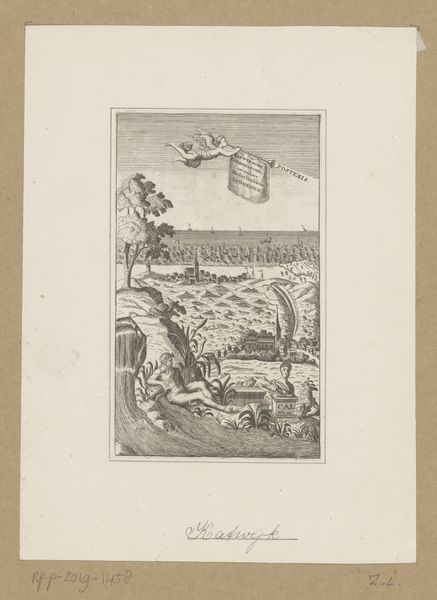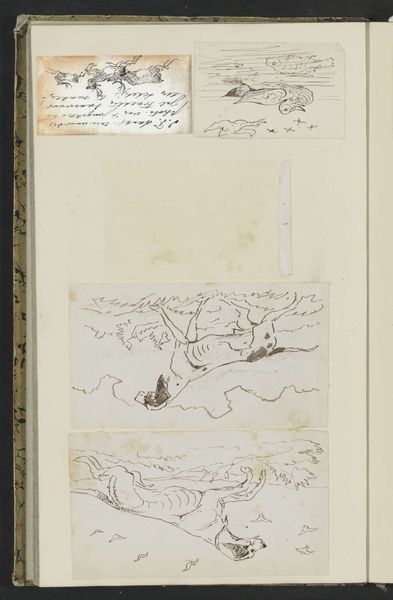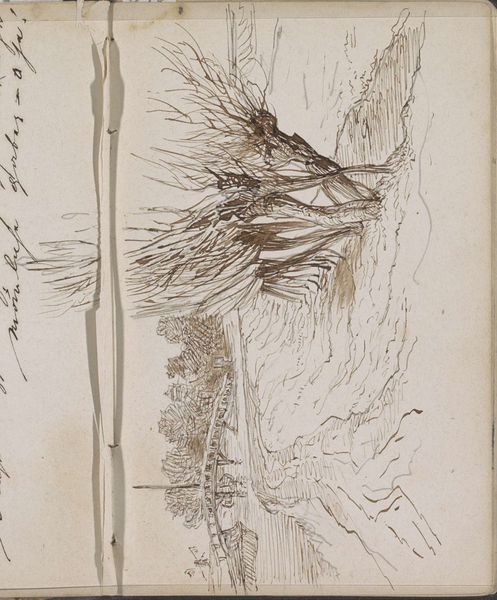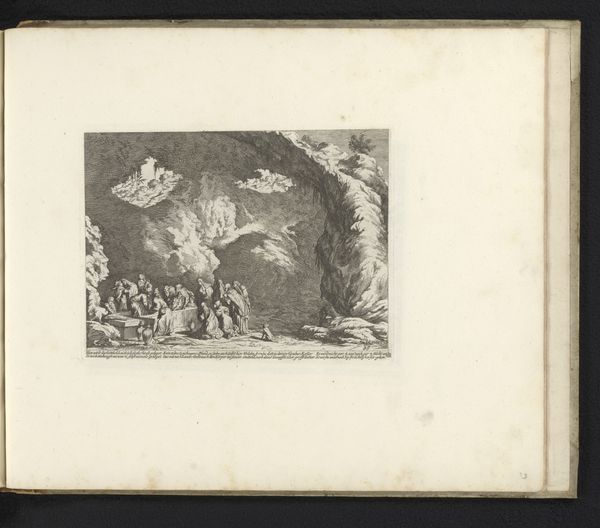
drawing, mixed-media, paper, ink
#
drawing
#
mixed-media
#
landscape
#
paper
#
ink
#
mixed media
Copyright: Rijks Museum: Open Domain
Editor: This is "Hond die een ooievaar achterna zit en een hert," which roughly translates to "Dog chasing a stork and a deer," made with mixed media on paper by Johannes Antonius Canta. It appears to have been created sometime between 1826 and 1888. The stark contrasts and raw lines give it a restless feel, don't you think? What social contexts do you see influencing a piece like this? Curator: That's a perceptive initial reading. As a historian, I'm interested in the rise of naturalism and realism during the 19th century and its effect on artistic representation. Canta is situated within an artistic milieu increasingly interested in accurate depictions of the natural world, but more than accurate, what purpose do these scenes depict to viewers of that era? How would such images resonate with, say, the Dutch middle class of the time? Editor: You mean beyond just appreciating the hunt? Curator: Exactly. The depiction of the hunt wasn't merely about illustrating a pastime; it spoke to broader cultural ideas. Think about how representations of animals—especially in relationship to humans—mirrored societal hierarchies and class distinctions. A successful hunt, visibly captured, implied a particular type of social dominance and economic stability, even morality. Editor: That’s interesting. It wasn’t just a simple drawing, but a reflection of the complex social dynamics? So by understanding how the consumption of such images worked back then, we could explore a piece’s political undercurrents? Curator: Precisely. Art served a public role in shaping societal views and justifying existing power structures. Even simple sketches could become vehicles for propagating socio-political narratives. How does understanding that framework change your interpretation of this work? Editor: I guess it makes me think about who would have had access to a sketchbook like this, and what stories they would have told themselves as they flipped through these pages. It’s not just a scene, but a glimpse into their worldview. Curator: Agreed. Considering art through a historical lens can provide deeper insights, moving beyond the aesthetic to the intricate web of cultural forces that shaped its creation and its viewers.
Comments
No comments
Be the first to comment and join the conversation on the ultimate creative platform.
